Research Article Open Access
Geological and Archaeological Evidence of El NiГ?Вұo Events along the Coast of El Oro Province Ecuador: Excavations at La Emerenciana a LateValdivia (ca. 2200 1450 B.C.) Ceremonial Center
| John E. Staller* | |
| Prometeo Facultad de Ciencias Matemáticas y Físicas, Universidad de Guayaquil, Ecuador | |
| Corresponding Author : | John E. Staller Prometeo Facultad de Ciencias Matemáticas y Físicas, Universidad de Guayaquil, Ecuador Tel: +593 4-228-3348 E-mail: jstaller@earthlink.net |
| Received August 09, 2015; Accepted August 25, 2015; Published August 28, 2015 | |
| Citation: Staller JE (2015) Geological and Archaeological Evidence of El Niño Events along the Coast of El Oro Province Ecuador: Excavations at La Emerenciana a Late Valdivia (ca. 2200 1450 B.C.) Ceremonial Center. J Bioremed Biodeg 6:309. doi:10.4172/2155-6199.1000309 | |
| Copyright: © 2015 Staller JE. This is an open-a ccess article distributed under the terms of the Creative Commons Attribution License, which permits unrestricted use, distribution, and reproduction in any medium, provided the original author and source are credited. | |
| Related article at Pubmed, Scholar Google | |
Visit for more related articles at Journal of Bioremediation & Biodegradation
Abstract
El Niño-Southern Oscillation is a band of anomalously warm ocean water related to changes in oceanic currents and trade winds. El Niño represents a general warming of surface sea temperatures along the Eastern Pacific, and a lessening or reversal of NE trade winds, creating warm humid air and reducing upwelling of cold waters resulting in dramatic perturbations to maritime and terrestrial flora and fauna [1,2]. El Niño events are differentiated by intensity and duration, or a combination of both. Particularly extreme or intense events as in 1983/84, or 1997/98 are referred to as Mega El Niño that appear to have their origins 5800 years ago [3-5]. Such climatic and oceanographic perturbations have dramatic impacts upon human adaptation and sociocultural development. These climatic and oceanographic alterations create a reduction of upwelling cold waters along the west coast of South America. These climatic changes result in dramatic perturbations to maritime and terrestrial flora and fauna and, consequently, human adaptation. El Niño events are differentiated by their intensity and duration, or a combination of both [6-8]. Particularly extreme or intense events as in 1983/84, or 1997/98 are referred to as Mega El Niño which appear to have their origins 5800 years ago [3]. There is geological and archaeological evidence based upon the frequency of species of shellfish, to indicate they increased in frequency and duration between 5800 and 3200 BP and decreased in frequency between 3200-2800 BP
| Introduction |
| El Niño-Southern Oscillation is a band of anomalously warm ocean water related to changes in oceanic currents and trade winds. El Niño represents a general warming of surface sea temperatures along the Eastern Pacific, and a lessening or reversal of NE trade winds, creating warm humid air and reducing upwelling of cold waters resulting in dramatic perturbations to maritime and terrestrial flora and fauna [1,2]. El Niño events are differentiated by intensity and duration, or a combination of both. Particularly extreme or intense events as in 1983/84, or 1997/98 are referred to as Mega El Niño that appear to have their origins 5800 years ago [3-5]. Such climatic and oceanographic perturbations have dramatic impacts upon human adaptation and sociocultural development. These climatic and oceanographic alterations create a reduction of upwelling cold waters along the west coast of South America. These climatic changes result in dramatic perturbations to maritime and terrestrial flora and fauna and, consequently, human adaptation. El Niño events are differentiated by their intensity and duration, or a combination of both [6-8]. Particularly extreme or intense events as in 1983/84, or 1997/98 are referred to as Mega El Niño which appear to have their origins 5800 years ago [3]. There is geological and archaeological evidence based upon the frequency of species of shellfish, to indicate they increased in frequency and duration between 5800 and 3200 BP and decreased in frequency between 3200-2800 BP [9]. |
| Multidisciplinary evidence is presented including; regional survey, excavations, 14C and AMS dates, geomorphology and geology, statistical analysis of minimum number of individuals (MNI) of marine shell to determine the approximate antiquity and duration of El Niño events and their possible relationships to widespread changes in human adaptation and the natural landscape and geomorphology between c. 4200 and 3450 B.P. in southern coastal Ecuador. These multiple lines of evidence are from archaeological research in southern El Oro Province, Ecuador (Figure 1). Excavation and regional survey uncovered indications of related to El Niño [10]1. Shell counts of minimum number of individuals (MNI) provide a basis for assessing the times of occurrence, intensity, and duration, as well as how such climatic events effected human adaptation (see also Staller [11-15]. There is evidence for a general trend of increased frequency of El Niño events that in some instances changed the climate and coastal habitats permanently. These El Niño-induced alterations required major adaptive changes and short-term increased dependence upon certain seasonally specific resources and suggest the long-term cultural response to such ecological and geomorphological transformations favored flexibility or increased diet breadth rather than specialization and/or dependence upon particular resources such as maize [10,16,14,17]. |
| Multidisciplinary evidence at the late Valdivia ceremonial center of La Emerenciana, documents repeated site abandonment related to El Niño events. Initial abandonment was in response to a Mega-El Niño radiocarbon dated to ca. 2150 B.C. associated with fossil beach ridge formation and reoccupation 2200 to 1450 B.C. Final abandonment was dated to ca. 1450 B.C., and associated with an earthquake and a shortlived reoccupation (Tables1). Were repeated site abandonments a result of El Niño or were abandonments also associated with earthquake induced [18,19]. Research with faculty of the University of Guayaquil will document this directly and provide additional information for our understanding of repeated site abandonments and extinctions of certain species of marine shellfish from this region. Results indicate widespread environmental degradation and geomorphological changes to the surrounding coastline were related to El Niño, and that it was clearly a factor to sociocultural development and adaptive responses. These data explore chronology, assess the intensities, and measure the effects of ancient El Niño events upon pre-Hispanic occupations this ceremonial center and pre-Hispanic occupations along the Arenillas River valley, El Oro Province, Ecuador. |
| El Niño in the Southern Coast of El Oro Province |
| Various lines of evidence will determine the approximate occurrence, antiquity and duration of El Niño events in southern coastal El Oro Province and their relationship to widespread changes in human adaptation, the natural landscape and geomorphology between c. 2200 and 1450 B.C. Regional perturbations suggest an increased frequency of El Niño events that changed the coastal habitats permanently resulting in the extinction of some marine shell species for a millennia. Adaptive change involved short-term increased dependence upon certain seasonally specific resources. However, the long-term cultural response favored flexibility or increased diet breadth rather than specialization and/or dependence upon particular domesticates such as maize [20,21]. |
| Coastal El Oro province represents a barrier island estuary a low energy tidal-dominated setting in the Gulf of Guayaquil (Figures 2a-b). This is a transitional environmental zone or ecotone, separating two biomes, the moist tropical forests to the north, and the dry desert coasts to the south. The region is biologically characterized by a high incidence of endemism in both the flora and fauna [10,12,14,16]. Lake cores from the Laguna Pallcacocha near Cuenca record an El Niño dated to c.1500 B.C. accompanied by or occurred subsequent to seismic activity, this evident by high levels of sediment load [22,19]. Ceramic diagnostics and 14C dates suggest a possible correlation between the 1500 B.C. and other events such as earthquakes and volcanic eruptions of the same approximate age, and widespread abandonment of sites in this region |
| The intensity and duration of El Niños are affected by ocean currents; cold water currents along the eastern Pacific are ordinarily accompanied by a strong, cool breeze. This cool breeze that slightly lowers the air temperatures producing moisture in the form of a dense fog or “garúa” (Plate 1). Cloud forests trap and recycle huge quantities of moisture in the form of clouds moving in off the ocean, even during the driest months [23]. The moisture generated maintains a high water Tables and year-round flow of the coastal streams, which have obvious implications for long-term human adaptation and population density. In coastal Peru, the garúa nourishes lush patches of vegetation, or “fog meadows”, called lomas, particularly between April and December [24]. Such Islands of vegetation in a sea of desert sand were important to early human adaptation and ecological diversity, and their geographic distribution is greatly dependent upon El Niño cycles [24]. When trade winds subside, the ocean responds with dramatic temperature increases, setting altered currents into motion [25]. A rise in sea level sets the stage for high tides that can produce large-scale erosion [26]. Average annual temperatures and rainfall are most dramatically affected during El Niño events. El Niño has its greatest environmental impact at 5˚S. Latitude with decreased duration and intensity along the Eastern Pacific to the north and south. Mega-El Niño events roughly occur two or four times a century, usually producing fluvial erosion, increases in sediment load in stream channels, large-scale modification of the coastline, flash floods without warning and increasing river discharges that radically alter the landscape resulting in large-scale modification of the coastline and sudden and dramatic increases in mean water level for periods of several weeks or even months [27,28]. (Figures 2 and 4) When such events occur during high “spring tides” (marejadas maretazos), the accompanying waves often result in mass destruction along the littoral [29]. As the storm passes or the tide ebbs, the increasing height differential between merging bodies of water causes sudden and massive seaward discharges called “storm surge ebb-residual flow,” creating new channels and widening old breaches [30]. |
| The climate in coastal El Oro is classified as “semi-arid,” distinguished by a marked annual variation of wet and dry seasons [31,32]. The nine-month dry season lasts from May to January (Tables 2 and 3). However, orographic rainfall occurs in higher elevations in the sierra and highland streams drain into the Jambelí Estuary, maintaining a constant supply of fresh water to the lowlands [31,33]. Average annual precipitation is insufficient to sustain a year-round agricultural economy [10,34]. Contemporary agriculture is generally by floodwater farming and small-scale pot irrigation. The coastal savanna is low relief topographically and does not lend itself to irrigation. Regional survey indicates that pre-Hispanic irrigation canals or raised fields are completely absent. The driest subregion is directly adjacent to the Peruvian frontier, the coastal savanna or Pampas de Cayanca (Figure 2a). |
| The coastal savanna is a dry tropical forest consisting of xerophytic thorn brush, dense clusters of algarrobo trees, and various species of columnar cactus (Cereus spp.). Ancient ceiba trees represent the last remnants of what was at one time a biologically diverse old-growth forest. Average annual precipitation is insufficient to sustain a yearround agricultural economy. Cultivation is by floodwater farming and small-scale pot irrigation. The close proximity of the cordillera in part explains the species diversity. The plant and animal communities consist of five primary habitats: .A) the mangrove forest on the offshore islands and foreshore lagoons and beaches; B.) Fresh and saltwater marshes and swamps beside the primary river channels, ox-bow lagoons and seasonal ponds. C.) Dry tropical forests on the coastal plain or savanna. D.) Banded salt flats or saltiral which forms a geographic barrier between the plant communities of the mangrove forest (mangal) and the dry tropical vegetation regimes of the lowland savanna, and E.) The piedmont forests concentrated in the higher elevations of the Cordillera and Andean foothills. The plant and animal ecology is seasonally varied, highly diverse and ecologically complex, and therefore highly fragile and susceptible to the effects of sudden El Niño induced climatic variation (Figure 2b). |
| The climate marked annual variation of wet and dry seasons. However, orographic rainfall occurs year-round in the cordillera and maintains a constant supply of fresh water to the savanna and estuary. Average annual precipitation is between 129 to 709 mm. There is a dramatic 75% reduction in precipitation between this region and the Peruvian border. Areas to the SE extending to the Peruvian border are drier and experience increased evapotranspiration behind the mangrove forest, creating greater salt accumulation on the intertidal salt flats. The average temperature is about 24.4°C., range from 22.7° to 27.1°C., with more than 90% occurring between January and April, the rainy season. Annual temperatures range from 27° to 35°C around Guayaquil due to higher annual rainfall, humidity and solar radiation [16,31,35,36] (Tables 3 and 4). |
| Environment and Ecology of El Oro Province |
| Southern coastal Ecuador represents a barrier island estuary with meandering streams with fresh and salt-water lagoons and oxbow ponds-habitats particularly sensitive to climatic perturbations. Southern coastal El Oro Province encompasses the area from the Jubones River, north of Machala, to the Peruvian border, an E to W distance of 45 km. The Cordillera de Tahuín to the SW foothills range between 100 to 200 masl [37]. The estuary represents an ecotone, or transitional environmental zone and the local flora and fauna are characterized by a high incidence of endemism [38,39,23]. The region is renown in the biological sciences for its endemic orchids (Orchidaceae spp.) and hummingbirds e.g., (Amazilia spp.) [40]. Unlike other regions of the Ecuadorian coast, coastal El Oro is ecologically distinct due to the close proximity of the Andes, which begin their ascent only 15 km from the active shoreline, more closely approximating northern coastal Peru. |
| The dry tropical forests consist of xerophytic thorn brush, dense clusters of mesquite or trupillo (Prosopis pallida) trees and algarrobo (Hymenaea spp. L.), as well as various species of columnar cactus (Cereus spp.) [41,42]. A tall ceiba (Ceiba trichistandra Bakh) tree at the north end of the site is the most prominent natural feature [10] (plate 7). Local villagers related that ceibas represent natural landmarks because they can be seen from great distances-the last remnants of what was, up to about eighty years ago, a biologically diverse old-growth forest [10,14]. The area around La Emerenciana is referred to as “los algarrobos”, after the dense stands of algarrobo (Prosopis spp. L.) trees along this portion of the Buenavista River. La Emerenciana is named after a small port once located 200 meters to the northeast and abandoned in 1964-65 after tectonic uplift made the river too shallow [10]. |
| The dry tropical forest consists of five primary environmental zones: A) mangrove forests situated on the offshore islands and foreshore lagoons and beaches; B) Fresh and saltwater marshes and swamps beside the primary river channels, ox-bow lagoons and seasonal ponds; C) dry tropical forests on the coastal plain or savanna; D) a banded salt flat, or saltiral, distinguished by a dramatic reduction or a complete absence of surface vegetation, forming a natural barrier between mangrove (mangal) plant communities and the dry tropical vegetation of the lowland savanna (pampas); and E) piedmont forests concentrated in the Tahuín Cordillera and foothills of the Andes (Figures 2a and 2b); (Tables 4a and 4b). The floral and faunal ecology are seasonally varied, highly diverse and ecologically complex, thus extremely fragile and susceptible to the effects of El Niño induced climatic variation [30,36]. |
| Environmental and climatic research on a series of glacial lake deposits from the Cuenca Valley, Ecuador produced extraordinarily detailed data on long-term El Niño events, tectonic activity, environmental change and the Holocene climate [2,8,25,43-45]. These lake core and archaeological data provide independent lines of evidence from the surrounding highlands that document possible effects of ancient El Niño related phenomenon and also evidence its chronology that precisely correlates with the multiple lines of data presented here. |
| Three fossil beach ridges were identified in systematic regional survey. They record the accretional history over the millennia by the fine white sand found throughout the lowland savanna. Beach ridges represent proxy records of prehistoric El Niños. The beach ridge under La Emerenciana is the earliest of three such geomorphological features (Figure 4). Other lines of evidence include flood deposits, and archaeological middens and soils. |
| Excavations at La Emerenciana indicate repeated site abandonment as do sites identified in regional settlement patterns [10]. Geological and historical data further indicate this is a tectonically active region [46,47,37]. Although seismic activity cannot be completely ruled out as a factor to site abandonment, more recent climatic data indicate El Niño must also be taken into account. Climatic evidence suggests increased frequency and duration of El Niño along the eastern Pacific after 5800 cal B.P. [1,2,28]. Settlement patterning suggest an initial dramatic decline and subsequent increase in population density and site size during the Late Formative i.e., after c. 1000-800 B.C., and a preference for alluvial soils and direct access to lowland lagoons and ponds [10,13]. |
| Pre-Hispanic Settlement Patterns along the Lower Arenillas River |
| Systematic settlement survey between the lower Arenillas and Buenavista River valleys recorded a total of fifty-two sites corresponding to the entire pre-Hispanic sequence and document the first evidence of Valdivia culture this far south along the coast (Tables 4a and 4b). Survey methodology involved systematic 100% coverage of the terrain using both topographic maps and aerial photos [48]. Differences in settlement patterning have also been reported as indicators of climate and changes in human adaptation. Eleven late Valdivia sites were identified in two distinct patterns, along the most inland fossil beach ridge, and on knoll tops beside stream channels. Valdivia ceremonial centers apparent by the presence of two artificial earthen mounds were La Emerenciana and Jumón [10,13]. La Emerenciana revealed four burials and one upright bundle burial was excavated from one of the two earthen mounds at Jumón [10,13,16,14]. Burials at La Emerenciana included four fully articulated upright adult females bundle burials associated with the stratum 5 floor 2 occupation, and a fully articulated sub-adult associated with the final occupation in stratum 6 [10,34,49]. A upright tightly flexed burial in an earthen mound at Jumón was also identified as an adult female. It appears such earthen mounds represent burial mounds as also evident at Real Alto, Loma Alta, and San Isidro [16,50-52]. Middle Formative settlements showed a significant reduction in occupation density and site size. All were clustered on knoll tops beside stream channels with ready access to alluvial soils. Late Formative site sizes increased significantly and were absent along the innermost beach ridge. |
| Valdivia localities are situated along the foreshore and near-shore estuary, as well as riverine localities [16]. Coastal sites listed under category “C”, are absent after the Early Formative and reappear after a period of almost a millennium (Tables3). Increases in Late Formative settlements with high densities of occupation debris reflect a clear preference for knoll tops beside stream channels with direct access coastal ponds and lagoons as well as terrestrial habitats and alluvial soils, indicating a higher dependence upon domesticated plants (Plate 2). The significant increase in site number and size during the Late Formative suggests a shift in adaptation emphasizing agriculture, possibly initiated by a greater overall frequency of El Niño. Extensive lamination lake core deposits dated to between 3300 to 2600 cal. B.P. provide corroborating evidence of increased El Niño activity [8,43] (Figure 3). Increased El Niño frequency explains a dramatic reduction of Middle Formative sites, and why only early diagnostics were identified, as well as a total abandonment of the foreshore between c. 1450-500 B.C. The destruction and/or burial of the barrier reef may have been related to reoccurring El Niño related activity or to Mega events associated with site abandonments. The identification of tsunamis also provides a basis for understanding the extinction of oyster. Oysters reappear in El Oro during the Regional Developmental and Integration Period (Figure 3). After c. 100 B.C., Jambelí Phase occupations with deep occupation horizons and large earthen mounds reappear in the foreshore. Shell middens throughout the Pampas de Cayanca near Huaquillas stand over 13 to 16 meters high and 150 to 200 meters at the base [10] (plate 1). |
| Archaeological and stratigraphic evidence indicates a mixed and diversified ancient economy, and included hunting, plant gathering, agriculture, and aquatic resource exploitation as primary components [10,13-16]. Stable carbon isotope signatures from the La Emerenciana skeletons indicate aquatic resources formed a major portion of the diet and, although maize was consumed, it played a minor role in the subsistence diet and appears to have been primarily consumed as beer or chicha [34] (Tables 5 and 6). The climatic and environmental changes induced by El Niño, played a central role in fostering a greater dependence upon agriculture, although the overall response favored flexibility or increased diet breadth over specialization [20]. |
| Pre-Hispanic Occupations at La Emerenciana |
| La Emerenciana is 12.72-hectares in total size, one of the largest Valdivia sites in coastal Ecuador [50-52,16]. It is situated on a fossil beach ridge at 2.5 masl about 3 km from the present shoreline [14] (Figure 7). Primary occupation spanned between ca. 2200-1450 B.C c. 650 to 700 years, (Figure 5a). The earliest pedestal bowls, stirrup-spouts and single spout bottles, as well as, the earliest red on white banded pottery in the Andes was identified with the Jelí Phase ceramic complex [10,14]. The red on white-banded ceramic tradition representative of the earliest pottery in southern highlands of Ecuador and northern highlands of Peru is believed to be associated with a cultural horizon called Chaullabamba [53-60]. These regions of the Andean sierra relate to non-Quechua and Aymara speaking cultures involved in the early spread of ceramic technology, maize (Zea mays L.), Strombus galeatus conch and Spondylus spp. oyster shell to the adjacent highlands and south along the coast [56-58,61]. The earliest AMS and radiocarbon dated appearance of red on white-banded pottery occurs in coastal El Oro Province c. 2200 B.C. [16,56, 61,62,34]. Initial site abandonment and burial by a fossil beach ridge relates to a Mega-El Niño dated to 2150 B.C. consistent with other regions of the Andes [43,63] (Tables1). Reoccupation and fossil beach ridge formation occurred c. 2200-1450 cal B.C. Another abandonment followed by a brief final reoccupation at around 1450 B.C. (Tables1). |
| Excavations at La Emerenciana |
| La Emerenciana had direct access to maritime and estuarine resources. Excavations were restricted to the summit of the northwest earthen mound. The earthen mound had an oval shape, 2.5 meters high, and was 200 meters (N-S) by 150 meters (E-W) with two oval clay platforms on the summit [10]. Four trenches (A-D) were dug to sterile levels, and 332m2 of a buried prehistoric occupation surface (floor 2) exposed. Five-meter square units (Cuts 1 to 4, 6), and a 1 by 2 meter pit (Cut 5) were excavated to sterile to record more specific data on stratigraphic variation (Figure 5b). A twenty-nine meter long vertical section (Profile A) was cleared in order to provide continuous stratigraphic information on this portion of the mound [14] (Figure 13). Profile A and the Trench D excavations uncovered three descending retaining walls or stepped terraces in the west and northern parts of the earthen mound, and these modifications were verified in the Trench B excavation (Figures 6 and 7). |
| Excavations were primarily by natural stratigraphic layers and exposed 139 archaeological features, primarily architectural modifications associated with mound construction, various ritual offerings and four fully articulated burials [14,49,62] (Figure 7). Initial occupation associated with stratum 3 was brief and dated to ca. 2400 B.C., followed by beach ridge formation (stratum 4). Later occupations associated with stratum 5 date to between 2000-1450 B.C. with a brief reoccupation associated in stratum 6 (Figure 8, Table 5). There was no evidence of domestic activity. Artifacts primarily consisted of sherds. There was evidence of a subterranean kiln [10]. Lithic debris was limited to 20 artifacts, but included two obsidian flakes from two different outcrops in the Valley of Quito and represents the earliest dated obsidian in coastal Ecuador [10,64]. Offerings include ocher covered pebbles, a Strombus necklace, chipped quartz flakes and some polishing stones [10]. |
| Differences in color, texture and composition were classified and grain size analysis of the various strata allowed for more detailed identification of stratigraphic layers (Tables 6a and 6b). Layers were divided according to artifact content and excavated following the conformities and contours of the natural stratigraphy and physical properties of the strata. Artifacts established the stratigraphic sequence and permitted the recognition of reversed stratigraphy, as well as primary and secondary deposits [65,66]. |
| A concentration of marine shell extending over 40 cm in cross section was identified on the northern portion or seaward portion of the site in Trenches A, B, and northern portion of Profile A. Arbitrary 20 cm increments were used, since the smallest natural unit of analysis (i.e., shell layer) was too large to detect subtle changes in the vertical distribution. On the summit of the mound the shell layer has a maximum depth of only 5 to 10 cm over the surface of floor 2 (Figure 9 and Tables5). The homogeneous grey ashy loam (stratum 5, living floor 2) has been identified at Valdivia sites throughout coastal Ecuador and later Jambelí sites [50,52,67-69]. The surface of stratum 5 is cultural, designated as living floor 2. Highest concentrations of cultural remains, primarily sherds and ancient shells, were in the uppermost 10 cm [10]. |
| Natural Stratigraphy at La Emerenciana |
| The A-Bw/Btn-Bk horizon sequence of soils characteristic of welldrained semi-arid conditions and five lower strata were continuous across the site, and two stratigraphic layers (layer 3 and 5) contained prehistoric artifacts pertaining to Valdivia culture. Identification of the stratigraphic layers was documented through grain size analysis using both hydrometer and pipette (Tables 6a and 6b). These data were critical to the interpretation of the various layers as documented in detail in the previous table. Stratum 6 was restricted to the NW sector and associated with the final abandonment [16]. The geomorphological, archaeological and shellfish counts supports the hypothesis of repeated site abandonment and widespread geomorphological changes [10]. |
| The lowest layer, stratum 1 identified at 97 cm below datum is olive beach sand with nodules of decomposing organic and gravel inclusions (Figures 8-10). A vertical section along the stream channel measuring 20 m long and 5 m deep suggests this layer is at least 3 m thick, with remnants of foreshore deposits of fluvial origin, gravel lenses and shell lag deposits throughout. Cross-bedding at below 2.5 m is the result of fluvial processes post-depositional weathering through the movement of groundwater, leaching and dissolution of carbonates altered the soil chemistry [70]. Various shell lag deposits and gravel lenses indicate groundwater movement, evapotranspiration or hydrological and sea level changes over geological time (Figure 10). The gravel lenses and clay shell lag deposits effect retention of organic matter, explaining the preservation of faunal remains [10]. Macrobotanical remains were not preserved, however plant microfossils were recovered from carbon residues in pottery sherds [34,62,71]. |
| Stratum 2 is yellow sand the result of post-depositional weathering associated with groundwater movement (Tables5). The deposition and decomposition of organic and inorganic compounds left concentrations of calcium compounds, carbon, phosphorous, and trace metals that apparently created chemical changes in the soil. Geological studies indicate this coloration may also be produced by the movement of iron oxides via water percolating through shell lag deposits [70]. |
| Stratum 3, designated living floor 1, is a pink sand extending between 94 and 124 cm below datum, containing archaeological features; pits, post molds, portions of foundations of habitation structures, indicating this was a domestic occupation surface (Figures 8-9). Ceramic diagnostics correspond to middle Valdivia Phases 4-6, and there was a relative paucity of marine shells, and a total absence of organic and faunal remains perhaps related to leaching and postdepositional alterations in the lower layers. Leaching of phosphates and iron oxides from stratigraphic (layers 5 and 3) was evidenced in the underlying by calcrete deposits with a yellow to light brown coloration (Tables5). The abundant faunal remains found with various features in stratum 5 were not preserved in this layer. |
| Stratum 4 represents the fossil beach ridge, a sterile fine white quartzitic dune sand with calcium carbonate inclusions. Some blending was noted with the overlying grey ashy loam and part of this beach ridge extends to the Peruvian border and beyond (Figure 4). Pallcacocha lake core deposits in the cordillera directly NE provide indirect evidence for the stratigraphic interpretation for repeated site abandonment. Beach ridge formation is a result of El Niño related phenomena and may correspond to a Mega-El Niño recorded in the Laguna Pallcacocha lake cores 14C dated to 4040 B.P.[8,43] (Figure 3). The chronology coincides with a ca. 2150 B.C. El Niño recorded at various sites in the Río Jequetepeque valley [63]. Beach ridge formation is roughly contemporaneous with those from the Cuenca Valley lake cores and in northern coastal Peru suggesting they hypothesis are a result of El Niño. |
| Stratum 5 extends between 10 cm, to just under a 1m with an average thickness of 35 cm (Tables5). It constitutes the existing land surface over 75% of the site and represents the primary occupation floor. The earthen mound measures 75 m north-south by 47 m eastwest and approximately 1.5 m high and few cultural remains were found in the lower and middle levels. It was kept meticulously clean, a pattern consistent with ceremonial centers throughout the Andes. [10,16]. However, the surface of stratum 5 was covered with oyster shell and sherds during the abandonment and the later reoccupation of stratum 6 to protect the mound from rising floodwater. |
| Evidence of disconformity in the lower interface of stratum 5 may be a result of depositional events (Figures 8-9). Most archaeological features were in the upper 10 cm. Architectural features include two complete oval or elliptically shaped daub platforms four retaining walls, and post impressions [10,14]. Ceramic diagnostics and 14C dates ca., 2200-1450 B.C. suggest occupation corresponding to Late Valdivia ca. 1800-1450 B.C. (Tables1). |
| A carbonate duricrust formation under stratum 6 was identified on the SW side of the platform, and on living floor 2, stratum 5 (Figure 5b). It is 5 to 10 cm thick, it is a calcified quartz sand crust made up of soft and friable silicified sands with no nodular development. This represents a silcrete, a result of superficial diagenesis that relate to seasonal fluctuations in climate resulting in the chemical alteration of sediments through hydration [72]. They form near stream channels in areas with a high water table. Silcrete crusts may be eolian, as the constant abrasion of fine-grained quartz sands lead to concentrations of fine siliceous dust, susceptible to solution and alteration by fog dew (garúa) or changes in groundwater. This formation suggests the earthen mound and surrounding area underwent climatic fluctuations including high wind velocities and increased ground water, consistent with the onset of El Niño. These changes initially affected the adjacent highlands in the middle of the dry season i.e., July or August. After stratum 5 abandonment increased precipitation ground water may have risen immediately before inundation by flooding and site burial through tidal asymmetry or by a tsunami associated with seismic activity [18]. During periods of intense precipitation, elevated lunar tides may have left sea salts in solution on the foreshore and salt flats. Post-depositional weathering or evapotranspiration later crystallized these marine salts greater and made the ground water richer in dissolved sea salts resulting in duricrust formation. |
| The uppermost layer, stratum 6, is dark brown silt loam ranging 10-58 cm thick, and represents a flood deposit, possibly combined with seismic activity [73,74]. Recent Mega-El Niño events indicate this region is highly susceptible to denudation and inundation and that coastal flooding is related almost exclusively to El Niño events. Moreover, seismic research indicates when such phenomena occur together, they can produce tsunamis, landslides, increased runoff and sediment transport during post earthquake rainstorms [18,19]. |
| Ceramic diagnostics and 14C dates from stratum 5 suggest stratum 6 was deposited at ~ 1450 B.C. (Tables5). Stratum 6 has the appearance of alluvium and is loosely consolidated and clearly distinct in color and texture from the underlying strata suggesting the site faced the main estuary lagoon. Artifacts disturbed by bioturbation through plant root action or recent human activity, and the lenses of burned ash (sublayer 6a), extending to 15 cm in several areas, are probably due to recent slash and burn maize agriculture (Figures 8-9). |
| Evidence from Laguna Pallcacocha record an El Niño dated to ca.1500 B.C. with high levels of sediment load accompanied by or subsequent to an earthquake [8,43,45] (Figure 3). found a 1cm thick tephra layer related to volcanic activity dated to 3500 cal. BP. and another at 3200 cal. BP [44] (Figure 3). However, no tephra deposits have been identified on the land surface or in cross section. |
| These internally consistent lines of evidence infer stratum 6 was fluvial, a result of floods associated with tidal asymmetry, possibly combined or closely following seismic activity (tsunami?). Stratum is restricted to the eastern portion of the site where the existing surface consists of the fine white sand similar to stratum 4. Research on seismic activity associated with El Niño indicates anomalous flood deposits may be a product of landscape shattering and/or El Niño related floods. When these occur in combination, they result in particularly large runoff and sediment transport [74]. In addition, adaptive shifts in response to bioturbation were also noted in settlement patterns. Perhaps the most dramatic, is the total disappearance of oyster (Ostrea columbiensis L.) from all Middle and Late Formative sites (ca. 1500-300 B.C.). Detailed research of several partially exposed shell middens standing over 12 m high near Huaquillas indicates a total absence of oysters for over a millennium [10,13]. Perhaps the barrier reefs were buried by excessive runoff of fluvial sediments and/or possibly destroyed by tsunamis. Seismic activity would have created extraordinarily high sediment loads in stream channels, and in a shallow estuarine environment, uplift would have exposed at least some of the beds to human and terrestrial predators. The permeability of eolian sediments affected the geomorphology. The coarser grain sediments that make up stratum 6 are more permeable than those below. Consequently, flow of rainwater percolating through the lower deposits is more restricted. Differences in permeability of the uppermost layer and the grey ashy loam below it are reflected by gaps or separations of as much as 5 cm at the stratum 6-5 interface related to the buildup of rain water. The poorly drained lower (layers 4-1) are further evident by the presence of decomposed or hydrated organic matter throughout. |
| In summary, the stratigraphy is characterized by well-defined interfaces with clear differences in color, texture and composition. The brown silt and ashy loam, strata 6 and 5 respectively, essentially preserve the overall integrity and stability of the underlying strata. The moist and fine grain sands quickly lost their overall structure when exposed to the natural elements, making the delineation archaeological features extending into the lower sand layers (strata 4 to 1) difficult. Stratigraphic evidence and dates from the Pallcacocha lake cores support the interpretation of repeated site abandonment due to climatic upheaval and/or geomorphological changes consistent with El Niño. (Layers 4-1) represent seaward components of a barrier coastline, shoreface, foreshore, backshore, and dune facies respectively. With the exception of uppermost stratum 6, the stratigraphic sequence, is consistent with progradational coastal development. Stratum 6 represents transgression consistent with deposition due to flooding, tidal wave asymmetry, and/or a dramatic influx of fluvial sediments, an indicator of El Niño or tsunami if such climatic events may have been associated with seismic activity [19]. |
| Shell Frequencies: Analysis of Minimum Number of Individuals (%MNI) |
| In order to minimize sample bias shells were collected from randomly selected excavation units. Evidence of prehistoric El Niños was derived from variation in shell frequencies by raw counts according to species. When total counts were uneven, the extra bivalve was counted as a complete individual. Once categorized and quantified by species, totals were broken down to percentages of minimum numbers of individuals (%MNI) segregated on the basis of natural stratigraphic layers. However, frequencies were by arbitrary increments in Trench B (Tables 7a-d and 8a-d). Differences in percentage MNI frequencies can reflect modifications to aquatic habitats due to cultural preference and/ or natural factors such as climate [66] Economic shifts and/or climatic change were inferred: A) A cultural bias for particular food species and, B) that various taxa inhabited the area during site occupation (Tables 7a-d). Potential factors complicating the statistical reliability, such as sea level changes, geomorphological, and environmental change (all side effects of El Niño) were considered. |
| A random sample was selected from the surface, identified according to species and assessed by relative frequencies. The low frequencies of some specimens made them statistically insignificant. Only five species were used for comparison: The raw counts indicated nutritional bias for Oysters (Ostrea columbiensis L.), Venus clams (Chione subrugosa), and Protothaca clams (Protothaca ecuadoriana) (Tables 7a-d). In more inland settlements, Simile Ark (Anadara tuberculosa), constituted the predominant species during the Middle and Later Formative sites, but were rare in excavations. Fishermen related that when packed wet in salt water, Anadara tuberculosa may be carried for several days without spoiling. Their abundance at formative sites indirectly reflects the importance of the mangrove forest and maritime resources and their absence at La Emerenciana was surprising because Anadara impressed cambered jars are emblematic ceramic diagnostics (Figure 13)1. |
| Land snails called “churo” and adapted to trees or the surfaces of mud flats beyond the limits of the high tide are a marginal food source and only exploited during periods of resource scarcity. Valide Horn Conch (Cerithidea valida) are buried in the brackish mud flats at high tide level or entirely out of water on reeds and twigs, and only consumed when more favorable species are unavailable. Both are indicators of environmental stress. However, they are sometimes ground into lime for chewing coca leaves. Specimens were restricted to the uppermost 10 cm of stratum 5, thus potential climatic and environmental indicators when the region was undergoing geo-climatic alteration during abandonment [10]. |
| Minimum number of individual (MNI) shellfish counts from the northern portion of the mound provides additional lines of evidence with the stratigraphic and geomorphological data. The shell counts from Profile A and Trench A and B indicate the most intensively exploited species was oyster (Figures 11 and 12) (Tables 7a-d and 8a-d). Oysters were most intensely exploited in stratum 5, followed by Pointed Venus Clam from coastal lagoons and mudflats, and Protothaca Clam buried in nearby mudflats or coastal bays. Such distinct species may reflect geomorphological or environmental changes and/or adaptive shifts related to El Niño. |
| Six hundred oysters, 300 from stratum 6 and another 300 from stratum 5 were randomly selected from arbitrary excavation units. Stratum 5 oysters averaged between 90 and 125 mm long, while those in stratum 6, only 45 to 70 mm, a 40% size reduction. The 40% reduction in stratum 6 indicates the barrier reef was affected by geoclimatic changes. Moreover, constricted growth rings were evident on the majority of bivalves, particularly pata de mula and concha prieta providing direct evidence of climatic perturbation and supporting the assertion strata 5 and 6 abandonments were a result of El Niño. Previously published reports indicate all flooding in this region is a result of El Niño, regardless of intensity and/or duration. Ecotones or transitional environmental zones are prone to draught, with short growing cycles, and nine-month dry season. They are highly susceptible to El Niño related perturbations. A portion of the mound was buried after the abandonment associated with stratum 5 occupation, reflecting a major El Niño event associated with seismic activity. However, earlier and later El Niño events provide no evidence of coastal transgression, but rather large-scale continuous progradation. |
| Results indicate distinct frequencies relative to the stratigraphic layers. In Stratum 3, floor 1 Protothaca Clam from the mudflats of coastal bays have the highest frequencies, followed by Venus Clam from the lagoons and mud flats, and finally by oysters attached to barrier reefs. The environment appears to have been on or near a bay, with mudflats and direct access to a barrier reef. A 19% decline in Protothaca clam in stratum 5 may reflect gradual environmental changes from a bay into a barrier estuary (Figure 11). Sand dunes and a fossil beach ridge 500 meters north of La Emerenciana are result of an El Niño associated with the stratum 6 deposition. Reduction in these clams may also be related to an increase in white sandy dune sediments into the coastal bay due to the formation of dune ridges. Increase in sandy sediments in the intertidal zone could have buried the clams. Stability in Pointed Venus Clam frequencies suggest the lagoons scattered through both sides of the coastal streams, and particularly those behind the barrier reef and mangrove islands, continued to be exploited. |
| Relative changes in the percentage MNI frequencies and grain size analysis of stratum 6 support a hypothesis of rapid geomorphological change. Smaller oysters and constricted growth rings on most bivalves found on the surface are consistent with longer and higher levels of precipitation, excessive drainage runoff, and swift or sudden introduction of large volumes of fresh water and sandy sediment. Slight increases in Valide Horn frequencies on the surface of stratum 6 suggest less favored food species were exploited supporting geoclimatic changes. Grain size, stratigraphic and ceramic evidence suggest the brown silt (stratum 6) may represent a flood deposit that covered over the northwest part of La Emerenciana i.e., the former shoreline. This depositional event occurred rapidly, perhaps explaining final site abandonment and may reflect a tsunami. |
| In conclusion, ceramic diagnostics in and on stratum 6 also suggest final occupation was restricted to less than 50 years [10]. Effects of El Niño-related activity and/or tsunamis are evident by the total extinction of oysters between 1500 to 300 B.C. Beach ridge formation is also relates to El Niño events, which can rapidly introduce volumes of sandy sediments into an estuary, burying and changing the configuration of ponds and lagoons located along the coast and further inland. The 17% decline in the frequencies of Pointed Venus may reflect changes in lagoonal and mud flat habitats, perhaps flooding or periodic inundation by fresh water incursion. Continued silting of an ancient arcuate bay once located due west of the site may explain the decreases of Protothaca Clam. One of the most striking changes in the surface samples is an increase in land snails, suggesting resource scarcity during final site abandonment (Figure 13). Once the coastal waters receded this species would have been available in the trees and surrounding mud flats at the high tide line. Significant increases in Pointed Venus suggest this low wave energy estuary and the coastal lagoons quickly returned to normal. Decline in frequencies of Protothaca Clam infers continued environmental change from a coastal bay protected by a barrier reef, to a barrier island estuary. A 20% decline in oysters on the surface also mirrors such environmental changes. Extinction of oysters for a period of ca. 1000 years after the final stratum 6 abandonment from this region is another indicator of the geological scale of destruction to the estuary and the barrier reef brought on by increases in El Niño related activity [10]. |
| Analysis of Shell Remains from Arbitrary Levels (Trench B) |
| Since the smallest natural unit of analysis was too large to detect changes in the vertical distribution of shell species or artifacts, seashells from Trench B were excavated in arbitrary 15 cm increments (Figure 12). These raw data are not directly comparable to those from natural layers. Shell frequencies in the midden corresponded exclusively to strata 5 and 6. Trench B %MNI oysters frequencies indicate a 30% increase in the uppermost levels and a 20% decrease in Protothaca Clam, consistent with shell frequencies for strata 5 and 6. Pointed Venus Clam slightly increases in level 2, but then decreases in uppermost level 1 to less than 10% of the total, while frequencies from natural stratigraphic layers average about 25% in stratum 5. Such differences may be related to sample size (Tables 8a-d). Pointed Venus clams would be more intensely exploited during periods of resource scarcity. The frequencies further indicate lagoonal environments remained stable, although they were a relatively minor resource (Figures 11 and 12). |
| Trench B shell frequencies are reliable indicators of environmental change, as their overall distribution is similar to percentage MNI from strata 6 and 5 (Tables 7b-c). Congruence in frequencies for stratum 6 and those from level 1 may indicate that the uppermost level was associated with the final occupation. Oyster counts from both stratigraphic layers and arbitrary levels indicate they were the most highly exploited and even more intensely exploited during stratum 5 abandonment. Results indicate shell in the upper levels of Trench B represent a single continuous deposit, the product of the final occupation of stratum 5. The uppermost 15 cm may be associated with the brief stratum 6 occupation. However, stratum 6 was not visible in cross section, due to the large quantities of bivalves and sherds [10]. Artificial retaining walls and descending terraces were recorded in the Trench B excavation. The construction of artificial terraces to demarcate sacred space is common to early huacas in the Andean highlands [58]. Various lines of evidence indicate two major El Niño events associated with site abandonment dated to c. 2150 B.C. and another dated to c. 1450 B.C. resulting in final abandonment. Auxiliary lines of evidence from the Cuenca valley and coastal Peru support the timing and interpretations repeated abandonment associated with ancient El Niño events. Other supporting lines of climatological and geomorphological evidence from contemporary El Niño events support the scale of geological and geomorphological modifications presented herein. Environmental evidence including modern analogues of devastation wrought by El Niño upon this region and provides a clearer understanding of its impact upon prehistoric populations. |
| Recent El NiГ?Вұo Related Effects in Southern Coastal Ecuador |
| The 1982/83 El Niño was the most devastating and destructive ever recorded in a 200 year historic record [75-77,29]. Precipitation along the Gulf of Guayaquil totaled 3650 mm, where the average is 1000 mm [26,29]. During the 1982/83 event El Oro Province experienced a 20 to 40 cm sea level rise that was maintained for months, followed by another sea level rise several months later [29]. Between December 1982 and June 1983, seawater levels rose approximately 2 m burying mangrove trees and shrubs in salt, sand, and fine mud (ibid.:22). Even more severe destruction befell this region during the 1997/98 event [78]. The 1997/98 Mega-El Niño was comparable in intensity, yet its affects were different. Its onset was already apparent in late June/early July of 1997 rather than late December. My interactions with fishermen along the northern shore of the Santa Elena Peninsula indicated fish capture included never before seen warm water fish species, and sea birds, particularly pelicans, were dying off in great numbers2. McPhaden [78] points out the SST associated with the 1997/98 event developed at such an alarming rate from June to December that new monthly records were set-this based upon records going back to the middle of the 19th century. At the height of the Mega-El Niño in December, the sea surface temperatures (SST) averaged nearly 4°C, the largest variation ever recorded. The SST remained anomalously high at 29°C in the Eastern Pacific until mid-May 1998, when trade winds abruptly returned and cold subsurface waters upwelling to bring on the conditions for the La Niña to follow [25,78]. The study area was submerged under two meters of water for a period of several weeks creating exceptional hydrological conditions that carried more sediments into the barrier island estuary in a few days than would normally be deposited over a period of several months or even years of average inflow. In comparison, the 2015 El Niño submerged this region under two meters of water for a period of several days rather than weeks. |
| Archaeological studies of ancient El Niños suggest they have a dramatic effect on long-term cultural development in these regions and to the south [1,28,7,60,73,79,80]. These data provide direct evidence that El Niño must be taken into account to interpretations of longterm cultural adaptation in the Andes [73]. Coastal stability and rate of geomorphic change are profoundly affected by El Niño cycles on a geological scale [81-83]. Distinctive side effects include unpredictable downturns of aquatic resources. However, mega-El Niños can be both beneficial and detrimental, mollusk and fish are displaced into shallower, more accessible waters so there is often an initial increase in “catches” of some species (Plate 1). Growth ring studies on shellfish and aquatic populations indicate an initial rapid growth followed by constricted growth rings on bivalves, and higher than normal densities of scallops and other invertebrates [29,84,85]. Intertidal and subtidal mussel beds and kelp forests are usually destroyed, resulting in widespread mortality that may sometimes take years to recover [29,35,86,87] (Figure 8). Such devastation is evident throughout the food chain [88]. |
| El Niño can modify pH and algae levels, turning wetland lagoons and ponds to a maroon red color or red tide. After several days, large numbers of fish and related aquatic fauna perish due to lack of oxygen. Such sudden widespread mortality tempered a strong reliance upon such resources [10]. With the increased frequency of events during Middle and Late Formative times, the adaptive response favored a short-term dependence upon agricultural food crops. Modern analogues suggest such events were central to scheduling and other adaptive adjustments to resource scarcity [17,21,89]. El Oro farmers refer to El Niños as inviernos buenos (good winters) because after the rains subside, the hillsides are lush, green, and dense with vegetation, crops may be cultivated year-round, creating beneficial short-term consequences for agricultural specialization [6,83,75,79]. This ecologically diverse environment appears to select for shortterm survival strategies, e.g., increased specialization, and scheduling distinct collective strategies of resource exploitation, to take advantage of changing environmental and climatic conditions [89]. The ancient adaptation was by necessity always flexible ranging from year round maritime research exploitation to periods of resource dependence upon food crops enough to withstand periods of scarcity or environmental stress brought by seemingly random periods of drought [16] (Figure 5). During the Middle Formative period c. 1450-1000 B.C. there were dramatic reductions in site size, population density and a total absence of ceremonial centers3. Late Formative period settlement patterns suggest a greater dependence upon terrestrial plants, and a preference for floodplain settings however the coast is reoccupied for the rest of the pre-Hispanic sequence [10,13]. A total absence of prehistoric settlements along the shoreline during the Middle and Late Formative ca. 1400-300 B.C. is related to ecological transformations and geomorphological changes brought on by El Niño (Tables3). |
| Concluding Remarks |
| Shell frequencies, stratigraphic, geomorphological, and geological evidence, as well as the formative settlement patterns, all point to the existence of ancient El Niño events in El Oro Province during the Early Formative. Direct and indirect evidence suggest repeated site abandonment at La Emerenciana was related such climatic events, and that human adaptation was permanently modified. Initial site abandonment was in response to a Mega- El Niño event dated to ca. 2150 B.C. associated with fossil beach ridge formation and reoccupation [90]14C dated 2200 to 1450 B.C., and final abandonment dated to ca. 1450 B.C. Final abandonment is associated with an earthquake and a short-lived reoccupation. These internally consistent supporting lines of evidence for a Mega- El Niño resulting in initial abandonment at La Emerenciana and fossil beach ridge formation tentatively dated to 4040 B.P. (~4400 cal. B.P.) [43] (Figure 3). El Niño events associated with final site abandonment was also intense and destructive, possibly associated with, or closely followed by seismic activity resulting in permanent abandonment of the ceremonial center at ~1450 B.C. Changes in settlement patterning at involved a shift to knoll top settlement localities situated along the coastal streams. The most dramatic evidence of this later event is further fossil beach ridge formations and subsequent extinction of oysters, presumably an important source of protein for over a millennium. |
| Acknowledgements |
| My sincerest gratitude to the Fulbright Association in Washington D. C. for awarding me a research scholarship and a dissertation improvement grant. My sincere thanks to the late Olaf Holm, director of the Museo Antropológico del Banco Central del Ecuador in Guayaquil, and the Department of Anthropology of Southern Methodist University for their sponsorship, generous and enthusiastic support. I wish to express my sincerest thanks to the faculty of Mathematics Sciences and Physics of the University of Guayaquil, Guayaquil, Ecuador for providing me an opportunity to publish a revised version of my research on the evidence of ancient El Niño Events at La Emerenciana and for inviting me to come to their university to carry out research with their faculty. I am grateful to the geologist, Dr. Kervin Chunga (Universidad de Guayaquil) for collaborating with me on this research and particularly for inviting me to carry out these investigations with him and his students. All stratigraphic, archaeological, and quantitative analysis is the sole responsibility of the author. |
| 1 The Anadara impressed diagnostics were also identified at the Valdivia site of San Lorenzo del Mate in 2003 in the course of surface survey with my colleague and friend the late Lcdo. Felipe Cruz Mancilla, head of collections at the national museum. |
| 2 While in the Santa Elena Peninsula in late June 1997 fishermen indicated to me that tuna had moved away from the shoreline into deeper waters, and fish species foreign to this region appeared, some of which they had never seen before. During El Niños warm water species from the north migrate south into this region. Tuna swim to deeper, cooler waters, and the shoreline was scattered with the carcasses of a number of bird species, turtles and fish, an indicator that this was a mega event. |
| 3 Formative period ceremonial centers in coastal Ecuador are distinguished by earthen mounds of varying sizes [13,90]. The earliest oval and circular earthen mounds pertain to Valdivia culture are mainly 2 to 4 meters high, with the exception of San Lorenzo del Mate which is eight meters high [13]. Later ceremonial mounds and elite earthen platforms are of increasing scale and more geometric in form, some standing 30 meters high and 60 meters at the base pertaining to the Milagro Quevedo (AD 1100-1531) culture as the one identified in my survey along the Buenavista River [10]. |
References
|
Tables and Figures at a glance
| Table 1 | Table 2 | Table 3 | Table 4a | Table 4b |
| Table 5 | Table 6a | Table 6b | Table 7a | |
| Table 7b | Table 7c | Table 7d | Table 8a | |
| Table 8b | Table 8c | Table 8d |
Figures at a glance
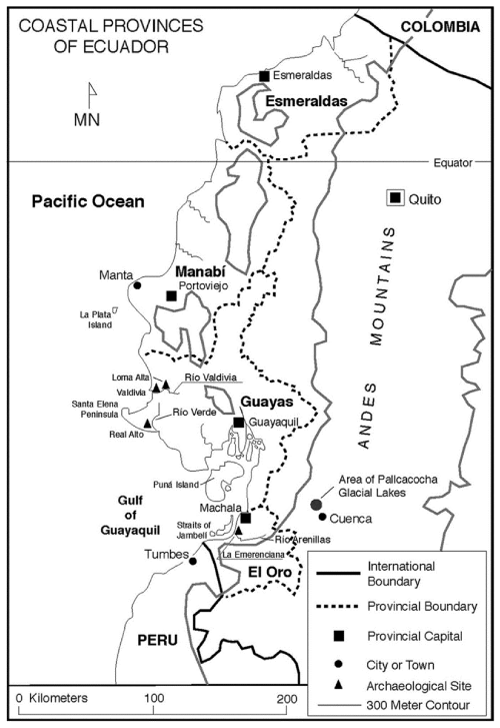 |
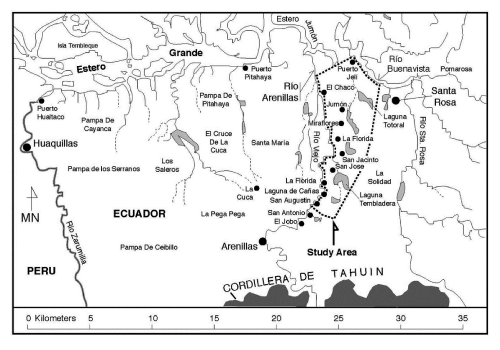 |
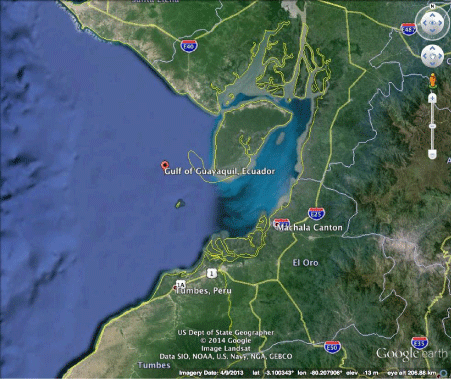 |
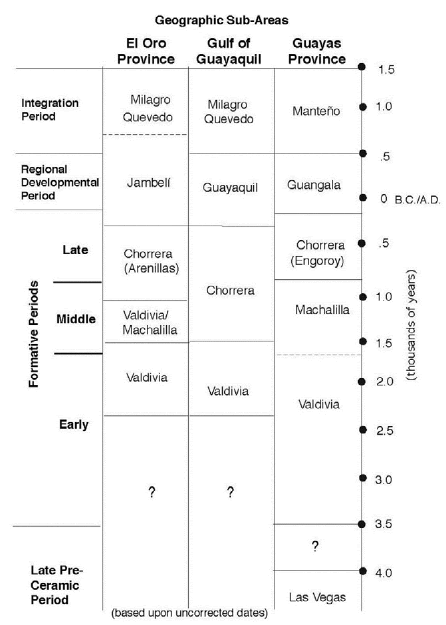 |
 |
| Figure 1 | Figure 2a | Figure 2b | Figure 3 | Figure 4 |
 |
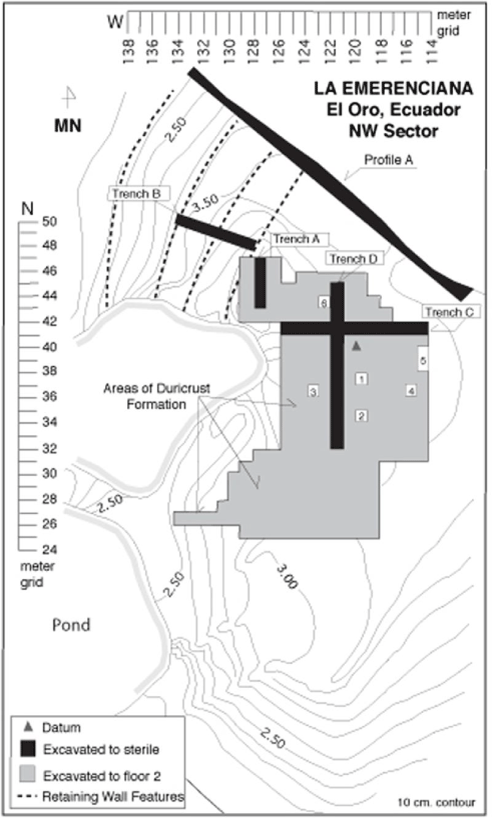 |
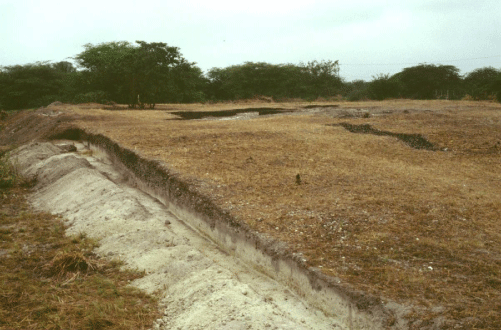 |
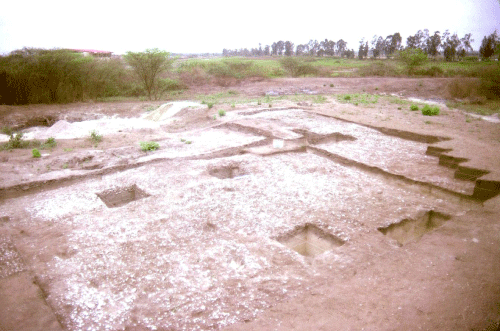 |
|
| Figure 5a | Figure 5b | Figure 6 | Figure 7 | |
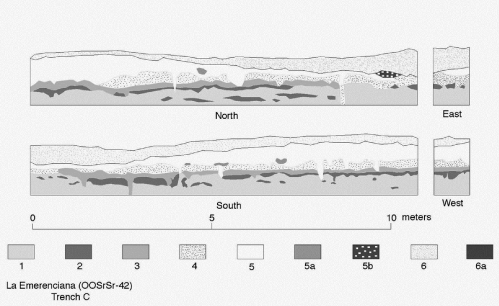 |
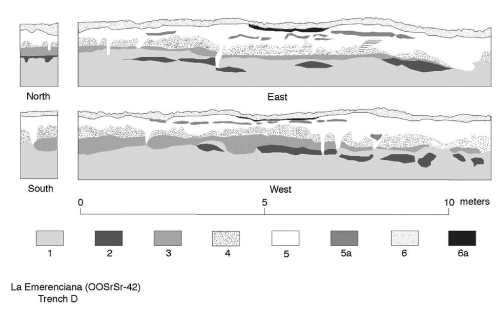 |
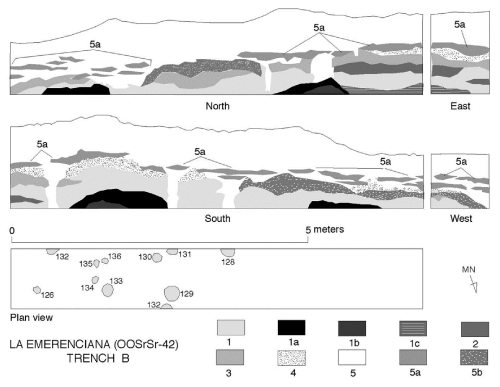 |
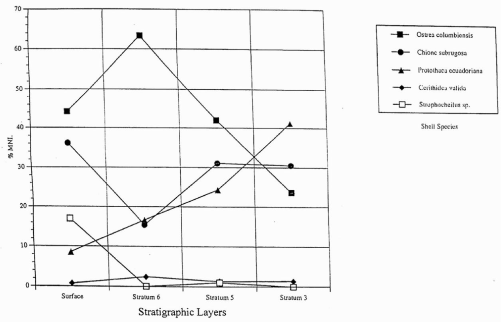 |
|
| Figure 8 | Figure 9 | Figure 10 | Figure 11 | |
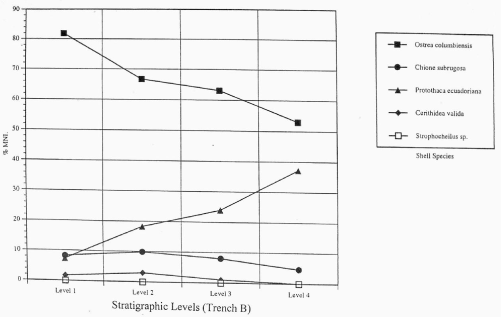 |
 |
 |
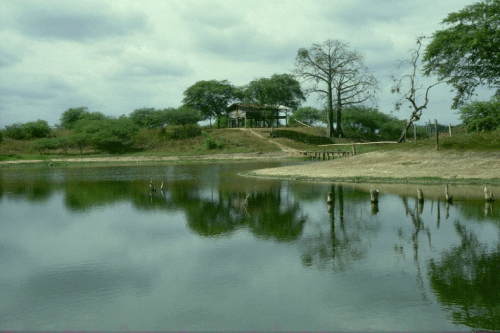 |
|
| Figure 12 | Figure 13 | Plate 1 | Plate 2 |
Relevant Topics
- Anaerobic Biodegradation
- Biodegradable Balloons
- Biodegradable Confetti
- Biodegradable Diapers
- Biodegradable Plastics
- Biodegradable Sunscreen
- Biodegradation
- Bioremediation Bacteria
- Bioremediation Oil Spills
- Bioremediation Plants
- Bioremediation Products
- Ex Situ Bioremediation
- Heavy Metal Bioremediation
- In Situ Bioremediation
- Mycoremediation
- Non Biodegradable
- Phytoremediation
- Sewage Water Treatment
- Soil Bioremediation
- Types of Upwelling
- Waste Degredation
- Xenobiotics
Recommended Journals
Article Tools
Article Usage
- Total views: 14549
- [From(publication date):
September-2015 - Jul 12, 2025] - Breakdown by view type
- HTML page views : 9912
- PDF downloads : 4637
